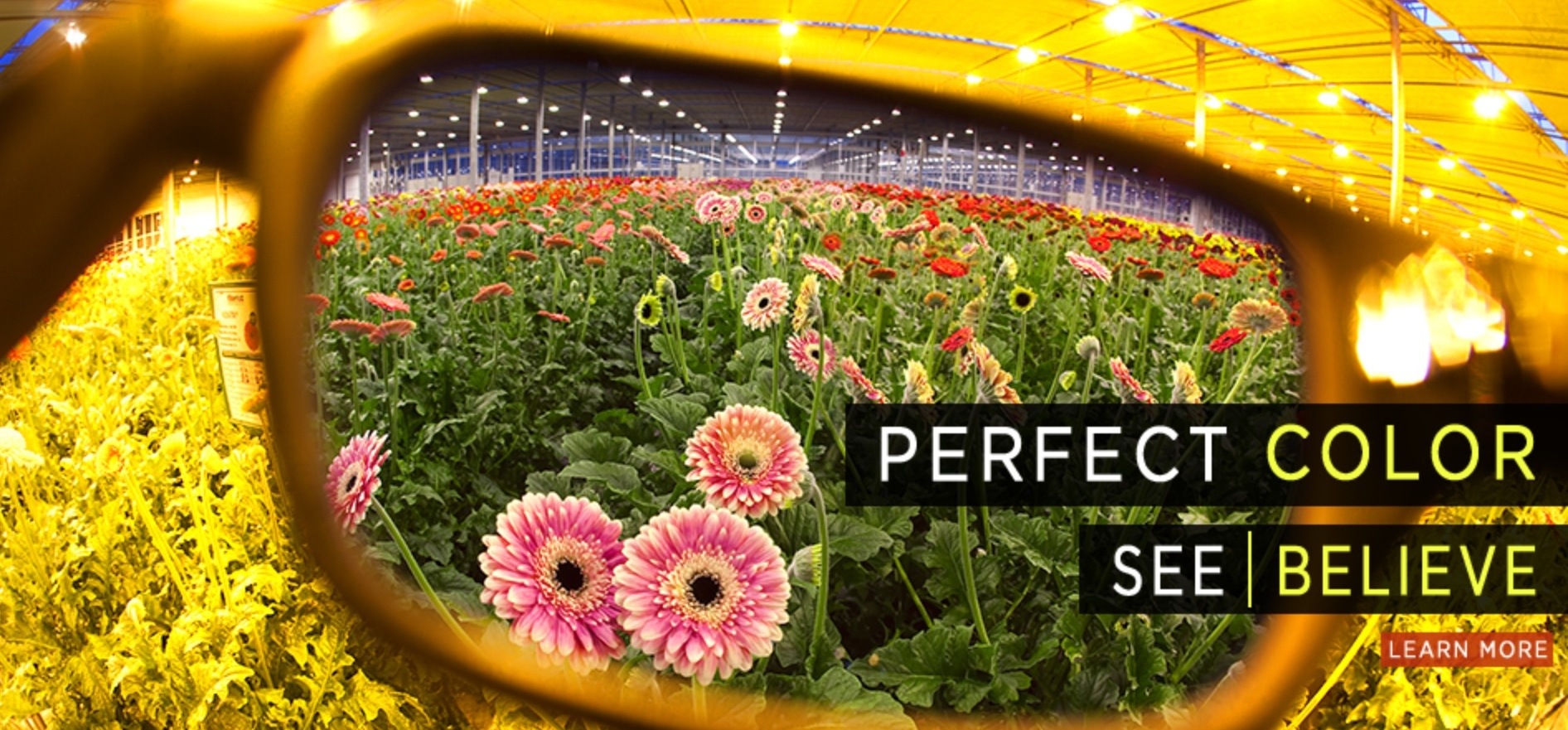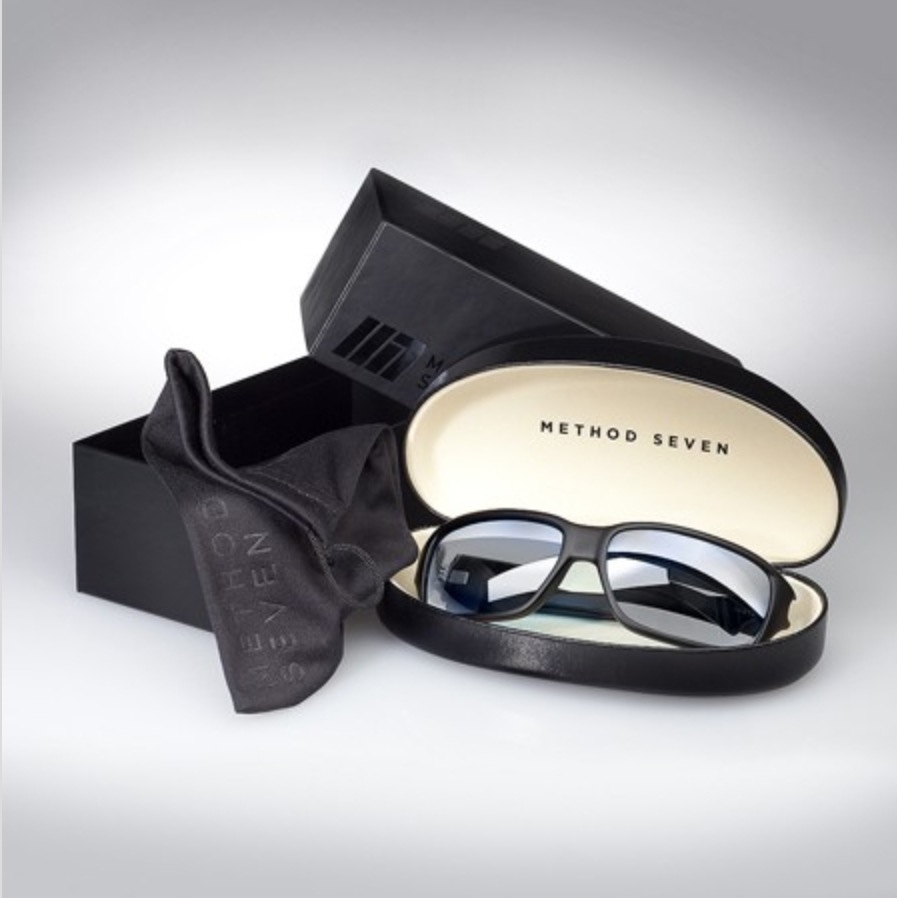.
See. Believe.
Their proprietary Rendition lens technology performs a miracle for you. They block the harsh yellow light emitted from High Pressure Sodium lighting ubiquitous to most grow rooms. Then the remaining portion of the light spectrum is re-adjusted in the lens to create white balanced light. Experience “Perfect Color” under HPS lighting – and work unconstrained in spite of that environment.
See the Method Seven shades in our store
For the first time under HPS lights, you will see the natural colors of your plants. Monitor plant health, determine correctly the color of your plant leaves, spot pests, disease, rot, mildews, mineral deficiencies and excesses. The Rendition lens reveals color precisely enough to use a PH test strip while in the grow room. All without turning your HPS lighting off or walking your plants, or your testing equipment into daylight. (If you are the kind of person who wants to know the details, you can read about the amazing science behind this below).
And they protect your eyes. Find yourself constantly squinting in the grow room? Over time constant exposure to high levels of UV and infrared radiation leads to irreparable eye damage. Loss of color perception, cataracts, and the destruction of your night vision are possible. Our Rendition lens blocks all harmful invisible wavelengths (UVA, UVB, UVC and Infrared). Your plants require these invisible wavelengths to flourish. Your eyes certainly don’t.
But that’s not the whole story. Cones and rods within your eyes control the eyes ability to focus and function best at light wavelengths very different from the indoor grow environment. New science proves that the eyes extra effort to focus and correct for excess yellow from HPS lights causes a host of eye strain and health problems. Rendition lenses balance the light in a way that allows your eyes, brain, and body to function correctly again. This results in drastically less mental strain and fatigue. Less fatigue equals better decision-making and a pleasant experience in your grow room.
The Rendition lens is like an oasis for your brain, a savior for your crop, your eyes, and protection for your investment. If you are not blown away by the experience, you can return them within 30 days for a full refund.
See the Method Seven glasses in our store.
How METHOD SEVEN Glasses Work
Evaluation of Method Seven Optics Under HPS Lighting Conditions
M7 Labs – The R&D team here in Santa Cruz – measures their Lens technology using a series of objective tests. The findings are compelling – so read on.
OVERVIEW
Although High Pressure Sodium (HPS) lighting offers an efficient solution for some industrial applications, such as the lighting of warehouses, and for Grow Room lighting, HPS lighting also creates visual problems for people working within its environment. The nature of these visual problems and the effectiveness of various solutions are discussed in this paper.
The following visual capabilities were evaluated within a Grow Room environment (HPS lighting conditions):
• Color Perception
• Ability to focus on shapes and motion
• The “strobe” light effect
• Visual clarity
These capabilities were evaluated, as seen through all of the following:
• The “naked eye”
• Method Seven glass “Rendition” lens
• Method Seven polycarbonate “Fission+HPS” lens
• Premium-brand sunglass, with glass lenses
• Popular sunglass, with polycarbonate lenses
HPS lighting is effective in the Grow Room because the light transmission is within a narrow “yellow” portion of the light spectrum (around 590 nanometers). Flowering plants need this wavelength of light to carry on photosynthesis. HPS lighting is also thought to be effective in industrial applications, because the large lumens of light generated per watt of electricity offer an economical solution.
This same concentration of yellow light makes it difficult for an individual to see properly. Humans see best in natural sunlight, or in “Balanced White Light” (BWL). BWL light, like natural sunlight, covers the entire visible spectrum of 390 to 750 nm. This broad spectrum of light allows us to see natural looking colors and to also easily recognize shapes and motion. Under HPS lighting our eyes are saturated with yellow light and we are unable to recognize any other colors.
Additionally, humans require a certain ratio of blue light (around 505 nm) to yellow light (around 555 nm) to be able to recognize shapes and to detect motion. There is a deficiency of blue light in an HPS lighting environment, and this profoundly degrades our ability to focus. This point will be explained further in the discussion of “rods” and “cones.”
COLOR PERCEPTION
We normally recognize colors of objects as seen under BWL. We can evaluate how close we are to BWL conditions by using two well-known methods.
In the first method, we evaluate the amount of red, blue, and green light reflected off of a “middle grey” target, better known as a photographic 18% grey card. Under BWL conditions, an equal amount of red, blue and green light is reflected off of this target.
We can also measure color using a Kelvin Color Meter that measures the visual “temperature” of the light.


